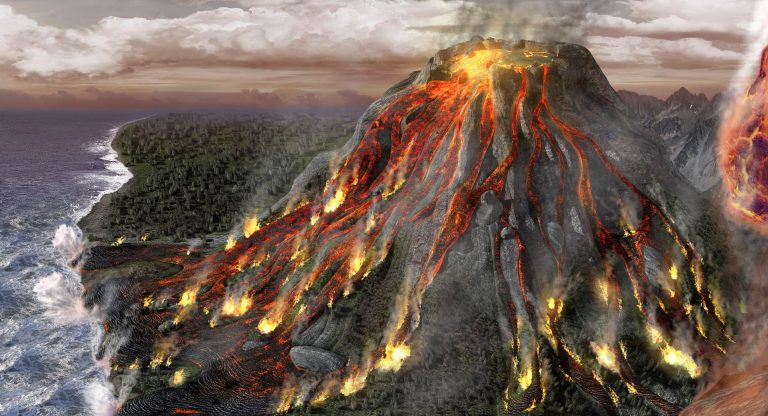Part:-1
A volcano is usually thought of as shooting up rocks and burning lava. Although their sight may be spectacular and a tourist main attraction, they could be disastrous often. The origin and activity of volcanoes on the globe are a matter of intense interest and enormous scientific research.
Magma is an extremely hot liquid and semi-liquid rock located under Earth’s surface. When a part of the earth’s upper mantle or lower crust melts, magma forms. A volcano is essentially an opening or a vent through which this magma and the dissolved gases it contains are discharged.
The three most important factor that may initiate a volcanic eruption are:
1-The buoyancy of the magma:- It is similar to when the water boils and forms steam.
2-The pressure from the exsolved gases in the magma.:- In some types of magma, it is found that rock composition also contains dissolved volatiles such as water, sulfur dioxide, and carbon dioxide. As the pressure increases, more and more of the dissolved volatiles in the magma. In some cases, when the magma rises, its solubility decreases with the decrease in pressure and hence water exsolves from the magma causing water bubbles. When these bubbles reach about 75 percent, the magma disintegrates into the pyroclast and erupts abruptly.
3-The injection of a new batch of magma into an already filled magma chamber.:- The injection of new magma forces some of the magma in the chamber to move up in the conduit and erupt at the surface.
When superheated water trapped below the surface of the earth rapidly converts from liquid to steam, violently disrupting the confining rock. Boiling water, steam, mud, and rock fragments are ejected over an area of a few meters up to several kilometers in diameter.
1-Effusive or Non-explosive eruptions are favored by low gas content and low viscosity magmas (basaltic to andesitic magmas).
2-If the viscosity is low, non-explosive eruptions usually begin with fire fountains due to the release of dissolved gases.
Lava flows are produced on the surface, and these run like liquids down the slope, along with the lowest areas they can find.
If the magma emerges along a fracture, it results in a fissure eruption, often called a “curtain of fire”
Lava flows produced by eruptions underwater are called pillow lavas.
If the viscosity is high, but the gas content is low, then the lava will pile up over the vent to produce a lava dome or volcanic dome.
In the second part, we’ll list some of the recently active volcanoes of the various regions of the world.

